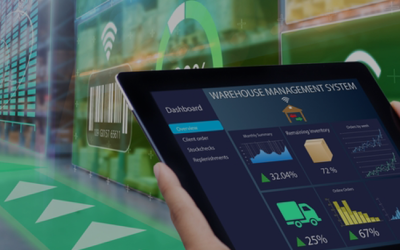Blockchain and IoT – The Perfect Combination for a Secure Future
IoT is yet to come of age – that’s the widely prevailing perception but it’s far from the truth. IoT is already everywhere, and by the coming year, “there will be 30 billion connected endpoints,” predicts IDC. The physical devices that were once offline are today transforming into online assets that communicate through enterprise networks. They are generating data, interpreting and communicating it constantly. It’s a complex mesh that gives rise to security challenges and enterprises must ensure that these intelligent machines do not double as potential points of attack. There is a need to broaden the scope of security that covers these new devices that are going online at a breakneck pace.
That’s not all. IoT systems currently achieve centralization through the cloud and all data moves to and from the cloud through the internet, even if the devices happen to be adjacent to each other. The whole cloud ecosystem is cost-intensive, marked by high storage and maintenance demands, supported by expensive networking equipment and huge server farms. As IoT devices proliferate to unprecedented numbers, the chance of the cloud turning into a bottleneck and the primary point of failure increases, giving rise to the possibility of disruptions that span the entire network.
Decentralization is the Solution but not without Challenges
IoT networks can find solutions to the challenges discussed above through a decentralization approach. A model that facilitates peer-to-peer interaction can negate the need to go through the cloud, thus insulating enterprises against the failure of a single node that can lead to the collapse of the entire network. The added advantage would be the reduction in associated costs of scaling the cloud infrastructure. However, decentralization brings along challenges of its own: security, privacy, data validation, consensual transaction, and potential for theft and unauthorized alteration of data. Blockchain addresses these challenges.
Blockchain is the Answer
Blockchain is not controlled by a single authority and is decentralized. The approach precludes the possibility of single-point failure. The result is an ecosystem that is resilient enough for IoT devices to run on. Here’s how blockchain addresses the challenges posed by decentralization:
- It necessitates consent of all parties involved in a transaction.
- There can only be an extension of a database and not modification, which makes it tamper-proof.
- Blockchain employs cryptographic algorithms so that privacy is maintained. While all parties involved can see that a transaction has taken place, they cannot see the actual contents of it.
- The technology makes it impossible for internal or external actors with malicious intent to manipulate it since it does not exist in a single location and there is no single communication thread that can be tapped for unscrupulous purposes.
As more and more IoT devices become capable of taking decision autonomously, blockchain makes them trustworthy by maintaining a tamperproof and secure decentralized ledger of all transactions without the risk of breakdown due to network collapse.
The ITC Infotech Advantage
ITC Infotech offers innovative IoT and blockchain solutions to its customers. In fact, our Blockchain Center of Excellence fosters a community of experts to recognize and nurture industry-ready blockchain innovations. We help our clients arrive at the right digital transformation strategy that combines the two new-age technologies to drive operational and cost efficiency securely. Our solutions cover a range of sectors to include health, auto, airlines, manufacturing, CPG and more. Our talent-powered, consultative approach is what makes us the preferred choice for organizations the world over when it comes to IoT and blockchain services.











